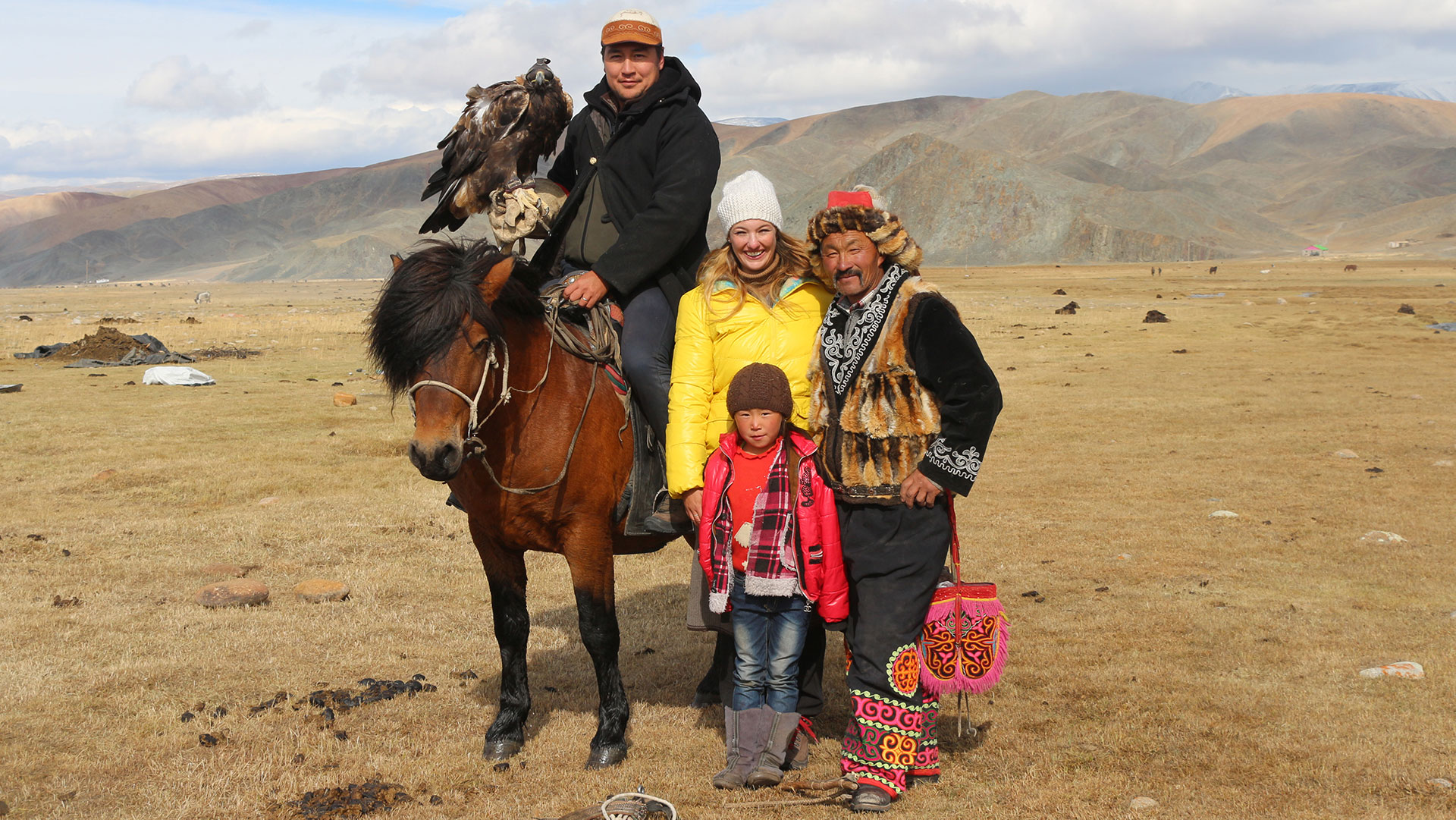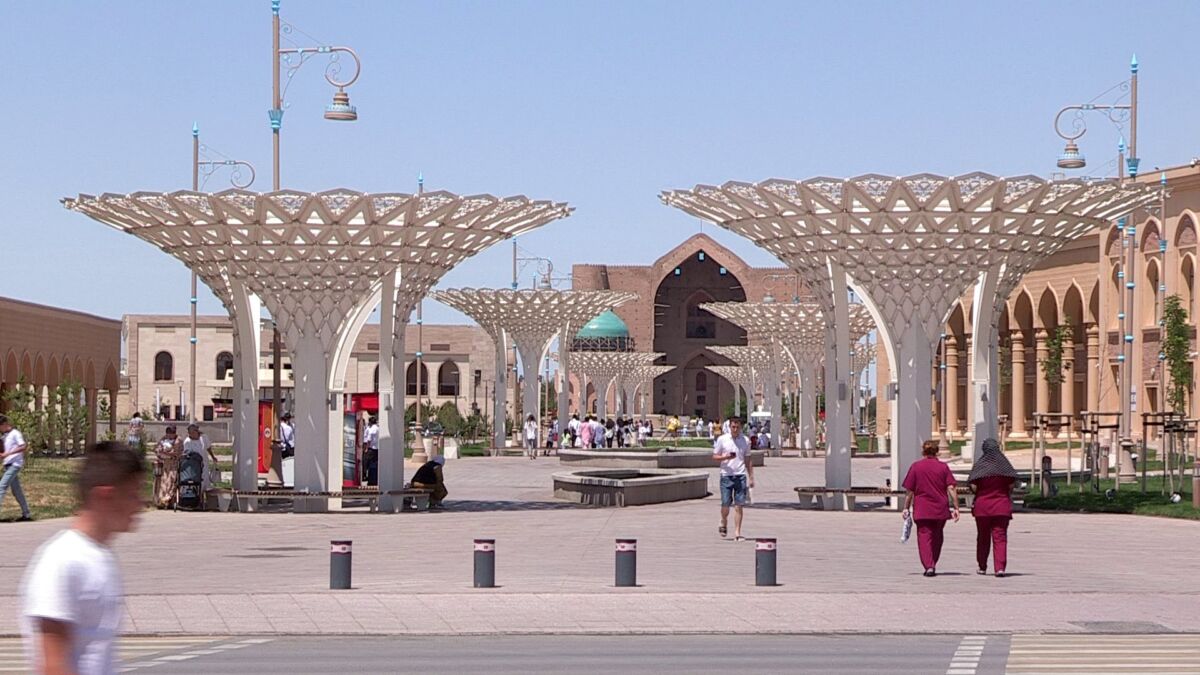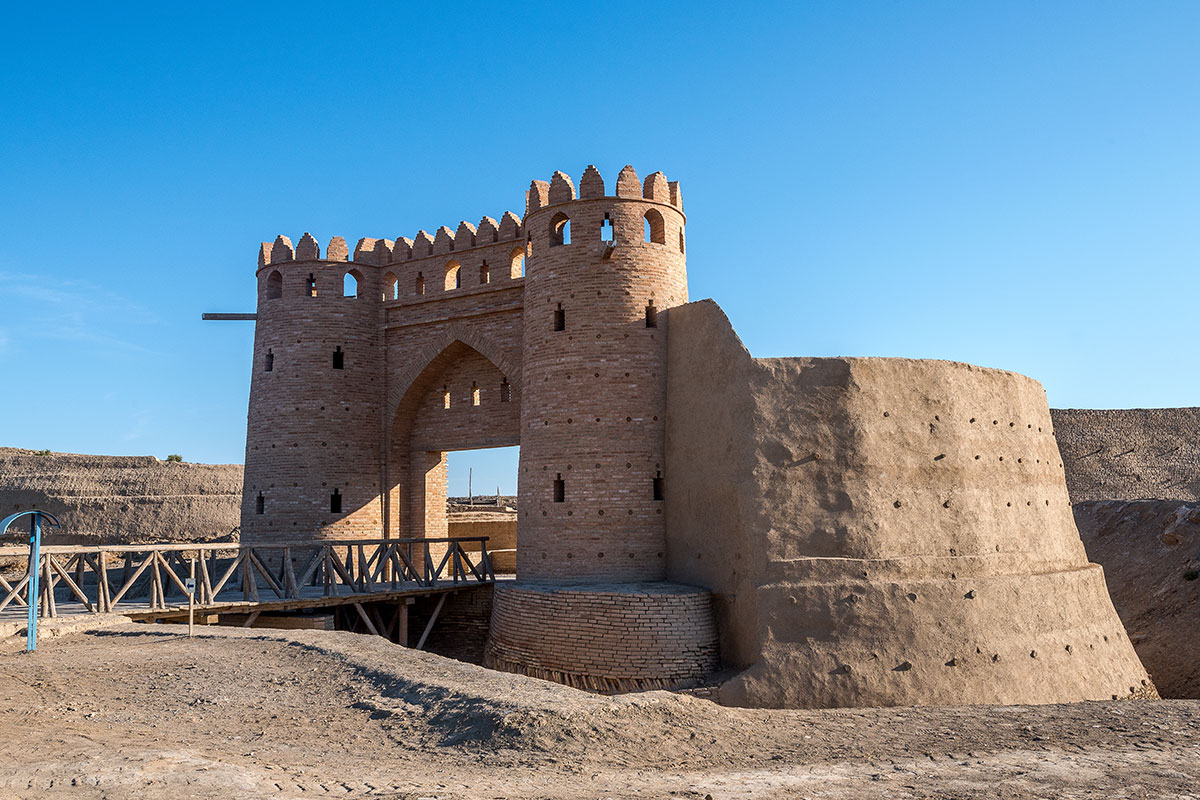ASTANA – Imagine being guided through the Altai mountains listening to local tales or learning about early trade and commerce at the site of an ancient city along the Silk Road from local travel experts. Indy Guide, the largest regional booking platform in Central Asia that connects guests with verified local hosts, might make this a reality. Alexandra Tosun, a co-founder of Indy Guide, spoke with The Astana Times about what Indy Guide has to offer to develop sustainable tourism in Kazakhstan as part of her visit to the International Conference on Sacred Heritage, Pilgrimage, and Sustainable Tourism in Turkistan.

Alexandra Tosun speaking at the International Conference on Sacred Heritage, Pilgrimage, and Sustainable Tourism.
Tosun said that the platform is on a mission to show the beauty of the region which is mostly unknown to the world through authentic and sustainable travel.
Founded in 2016 by the Swiss couple, ethnic Kazakh Atahan Tosun and his wife Alexandra, Indy Guide now brings together the largest travel community for Silk Road destinations with over 2,500 hosts and 5,000 listings. It connects travelers with thousands of service providers – guides, drivers, tour operators, and hosts in Central Asia, the Caucasus, Mongolia and beyond.
“Our hosts are the real travel experts. What we do at Indy Guide is to increase the visibility of our destinations mainly to western travelers. Our main goal is to share the beauty of this region and to support local communities that are engaged in tourism,” said Tosun.

Ethnic Kazakh Atahan Tosun and his wife Alexandra founded Indy Guide back in 2016. Photo credit: indyguide.com
She described Indy Guide travelers as “adventurous and independent.” “They seek the wilderness and the uniqueness of an unexplored destination and the adventures that come with that. In our hectic commercialized world that is full of materialism and stress, people are looking for something meaningful. Central Asia and the destinations along the Silk Road have all of this still to offer. That is the advantage of being an underrated destination that does not have to deal with mass tourism yet,” she added.
Often called the heart of Eurasia, Kazakhstan has a vast landscape, a sprawling travel destination, which is unlike anywhere else in the world. From the ancient cities of Otyrar and Sauran to endless steppe in the central part, mountain peaks in the east, not to mention the thriving Caspian Sea coastline in the west.
Kazakhstan has five UNESCO World Heritage Sites, including the Khoja Ahmed Yasawi mausoleum in Turkistan and Tamgaly petroglyphs in northern Kazakhstan as well as 14 sites on the tentative list.

The Khoja Ahmed Yasawi mausoleum in Turkistan is included in UNESCO World Heritage Sites. Photo credit: otyrar.kz
“With its natural and historical attractions, Kazakhstan has a lot to offer. Especially the culture of the nomads and in general, the hospitality here is a lifestyle that Europeans seem to be fascinated about,” said Tosun.
“The architecture, the culture, and the history are so different from the ones in Europe that it is a true experience and adventure for western travelers. I think that the vastness of the area in combination with the natural, cultural, and historical wonders are the main attractive factors why travelers come to this region,” she added.
Yet, few people outside of Kazakhstan are familiar with these incredible travel opportunities.
Tosun said she hopes that as the world loosens vaccination requirements and travel restrictions, people will be able to travel more freely.
She also noted that since the pandemic, more people travel to find spirituality, psychological and emotional security, and a connection to something meaningful. “They [travelers] also have the desire to experience an adventure in nature. This means that travelers want to include cultural and natural experiences in one trip,” she said.
The rise of sustainable tourism is another positive side effect of the pandemic.
“The numbers on our platform show an increase in independent and sustainable travelers. They do want to travel but with values that are important to them like respecting local traditions, protecting the environment and wildlife, and supporting local communities,” said Tosun. “That is the kind of impact that many travelers want to see from their travel. We believe that this is the way forward and Indy Guide wants to be an enabler for this development.”

South Kazakhstan is famous for a number of historical sites and ancient cities, like Otyrar located along the Silk Road. Photo credit: kazakhstan.travel
Particularly, in regard to historic monuments like the Khoja Ahmed Yasawi mausoleum, it is crucial not to forget the importance of the historic site and the well-being of the local communities that the historic heritage belongs to, according to her.
“For companies like ours, this means educating any type of traveler in the right behavior and bringing so-called ‘good tourists’ who are interested in the history of a country, want to make a real connection with the local people and respect their traditions and way of living,” she said.
Skilled Indy Guide hosts allow tourists and residents to gain firsthand insight into Kazakh culture, history, and heritage with an approach that rethinks conventional travel experiences.
Tosun also highlighted the rapidly developing tourist infrastructure in the region, particularly Turkistan city, which was named the nation’s spiritual and historical capital by President Kassym-Jomart Tokayev.
“There is a brand new airport with direct connections to Istanbul, Türkiye, which makes it reachable from all over the world. There is a new kind of entertainment area with a museum, a flying theatre, a visitor center, shops, restaurants, and an ethnic village right next to the mausoleum. This makes it easy for travelers to learn more about the traditions, music, food, and handicrafts of the Kazakh people,” said Tosun.
There are similar historical sites that can be found in the nearby area. Tosun mentioned the ancient Otyrar and Sauran cities located along the Silk Road.
“The tulip has its origins in Central Asia as well and in spring this flower can be found around Turkistan by thousands and there is even a festival to celebrate that. There is also a development project going on regarding yurt camps in the area,” said Tosun.
“It always surprises me how much there still is to discover. Even for me, who has been there several times, there are always new places to go and new things to learn about,” said the founder. “Central Asia has changed our lives, it can change yours too.”
The website is independent, as Indy Guide is not a tour operator. Users can browse a wide range of fixed-price offers with reviews from previous guests.
“We get so much feedback from our travelers saying that their travels in Central Asia impacted their views, led to lasting memories, and even made friends for life. They look for an authentic experience, not something superficial or artificial. Tourism and traveling mean understanding other cultures better and this creates acceptance, tolerance, and a better understanding of the world,” concluded Tosun.
Indy Guide tours are available for booking at indyguide.com.

